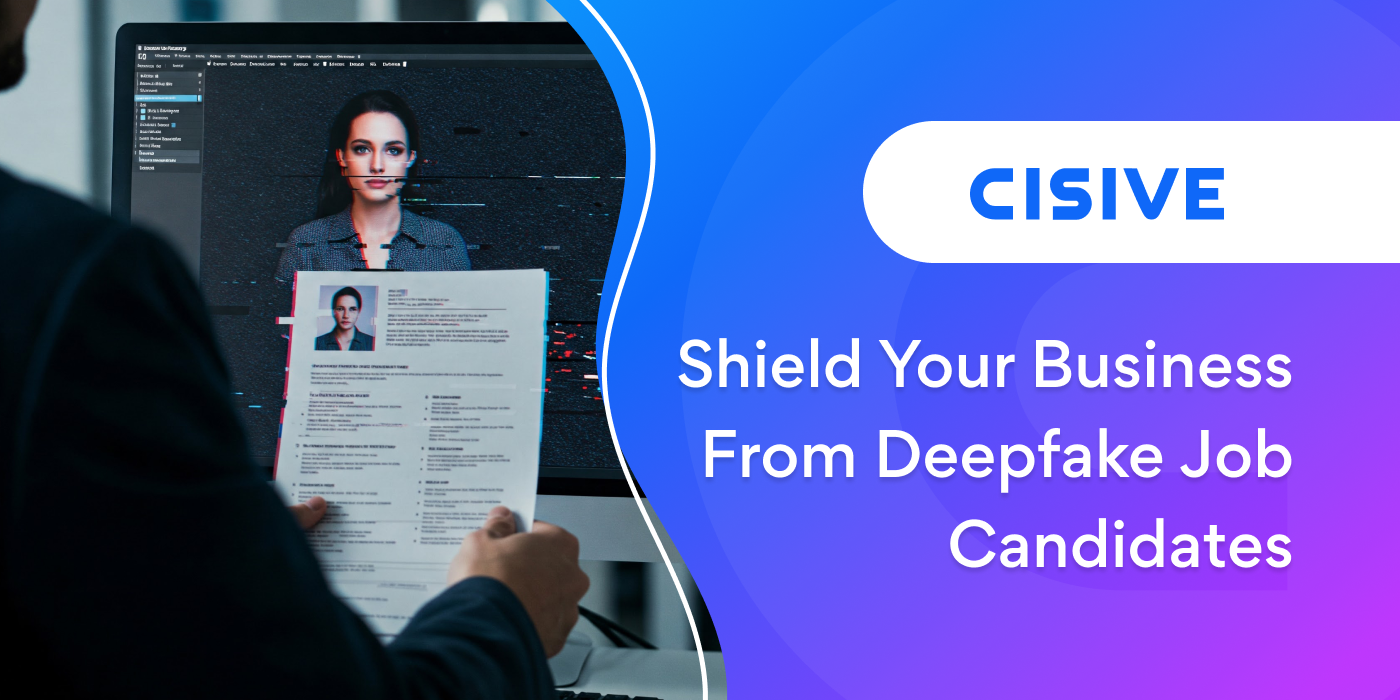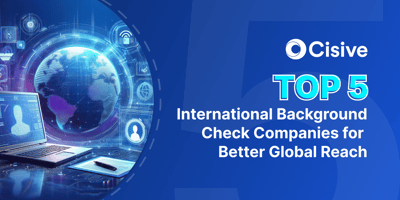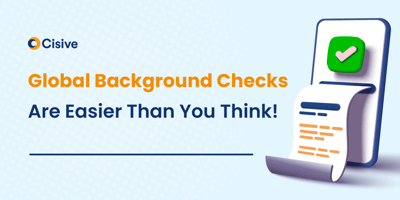

There are hundreds of background check companies, but not all of them offer a robust international...

A growing number of organizations are discovering too late that the person they hired isn’t the same one who shows up to do the job.
Armed with AI-generated resumes, deepfake-enabled video calls, and stolen credentials, today’s fake applicants are more convincing and harder to detect than ever before. This trend is no longer limited to resume padding or minor embellishments. It’s evolved into a sophisticated, high-stakes threat that reaches into cybersecurity, compliance, and operational integrity.
With remote work, decentralized onboarding, and contract-heavy staffing models becoming the norm, the barriers for bad actors continue to shrink. From IT workers with access to sensitive systems to final-mile delivery contractors entering customer homes, the consequences of hiring an imposter go far beyond a single bad hire.
Organizations that fail to modernize how they confirm candidate identities put themselves at risk for data breaches, regulatory violations, reputational damage, and financial loss. In this new hiring landscape, the most critical question isn’t “Is this person qualified?” It’s “Is this person even who they claim to be?”
For years, organizations have dealt with resume exaggerations including misstated degrees, inflated job titles, or omitted employment gaps. But today’s threat landscape is something else entirely.
Advancements in generative AI have made it easier than ever to create compelling fake identities. Candidates can generate flawless resumes with fabricated experience, pass technical screenings using pre-scripted prompts, or even outsource interviews to someone else entirely. In extreme cases, deepfake technology has been used to impersonate a real person on video, complete with synthesized voices and facial movements.
“There has been the need [for identity validation] for as long as background screening has been in place,” says John Davidson, Senior Vice President, Strategic Supplier Relationships at Cisive. “But that has been exacerbated by the distributed workforce in a post COVID environment to ensure that the data that you collect on an application… matches the collection of carbon that says who they are.”
While legacy screening processes might catch outdated credentials or obvious red flags, they’re not built to answer the most critical question: Is the person actually who they say they are, and are they authorized to do the job?
Identity fraud is more than a cybersecurity concern, it’s an enterprise-wide threat. Industries like healthcare, finance, energy, and transportation are especially at risk, as bad actors increasingly target roles that grant access to sensitive systems, physical infrastructure, and proprietary data. A fraudulent hire in these environments can quietly compromise operations, expose critical systems, steal intellectual property, or erode compliance from the inside out.
The risk is particularly acute when it comes to third-party contractors. In hospitals, power plants, and logistics hubs, it’s common for contractors to be vetted by outside staffing firms, with little day-to-day visibility from internal teams. That disconnect means frontline supervisors often don’t know exactly who should be on-site, or whether the person who shows up is the one who passed the background check.
For example, the transportation industry requires organizations to work with a significantly high number of contractors to get deliveries to their destination on time. “95% of those people that are accessing [a facility] are probably not your employees, they’re owner operators, they’re carriers, or they’re drivers for other carriers,” estimated Davidson.
A single identity failure can trigger:
The cost of inaction isn’t only measured in hours or headcount. Inaction can also open your organization up to legal risk, board scrutiny, and public fallout. “Your name now is in the news because of one person who failed to match the face of the ID when they went through I-9 E-verify” says Erica Rice, Chief Production Officer at Cisive. By the time a threat is visible, the damage is often already done.
In many organizations, identity validation is still viewed as a “nice-to-have” rather than a necessity. Pressure to fill roles quickly, especially in high-growth or high-turnover environments, often means that background checks and identity confirmation are rushed or bypassed entirely. But cutting corners to accelerate hiring can create opportunities for imposters to gain insider access to your organization.
“There’s all these friction points,” Davidson explained, “between HR, recruiting, procurement, compliance, security… any additional step is seen as an impediment. But the organization has to be committed to the protection of its people, its property, its assets, its brand, and its customers.”
The reality is, many organizations are already behind and haven’t moved fast enough to adapt to the rise in sophisticated identity fraud. While tools like biometric multi-factor authentication exist, adoption has lagged, and that hesitation has created risk.
As Rice put it: “We’re going to have to evolve as an entity, as an industry, to include this biometric multi-factor authentication as a part of our regular processes. This is our new norm. [Biometric screening] is what you need to spend on. It's not a secret cheat code. It's the standard in the world we live in now.”
Without cross-functional alignment or a clear process for escalating identity concerns, red flags go unnoticed. And when a mis-hire slips through, the impact doesn’t stop at one bad decision—it ripples across compliance, trust, and long-term business resilience.
There’s no one-size-fits-all solution for identity validation. It requires a tailored strategy based on the organization’s structure, workforce model, and risk profile. But companies don’t have to solve these challenges alone.
Partners like Cisive can work with your team to assess your hiring risk, determine your needs for identity validation and suggest a tailored process and relevant solutions that are right for your organization. “It’s not just one tool that’s going to solve this,” says Rice. “But the first thing that clients have to answer for themselves is, what are you going to do internally? And then, once you know what that process is, we can tell you how we can help you within that.”
Protecting your businesses requires “the thoughtful employment and application of various tools to work to thwart nefarious activity, with an understanding that most activity is not nefarious,” agrees Davidson. “There's no silver bullet.”
By working with identity validation experts who understand fraud, regulation, and technology, organizations can close critical gaps and build resilience into every layer of their hiring and workforce processes.
Because in a world of growing digital deception, knowing who you’ve really hired may be your most powerful security measure.
As AI-powered deception grows more convincing, organizations must treat identity validation as a critical part of workforce security. Building smarter, more integrated systems that confirm who’s really behind the resume can prevent risks from turning into reality.
Ready to strengthen your defenses? Talk to an expert about how identity validation can fit into your organization’s hiring and risk strategy.
Author: Shannon Fortner
Bio: Global Solutions Director, Product Management at Cisive.
Let's Connect on LinkedIn
There are hundreds of background check companies, but not all of them offer a robust international...

In this Cisive Product Highlight series, we review key tools to consider when screening your...

The Federal Deposit Insurance Corporation (FDIC) is an independent agency created by the Banking...